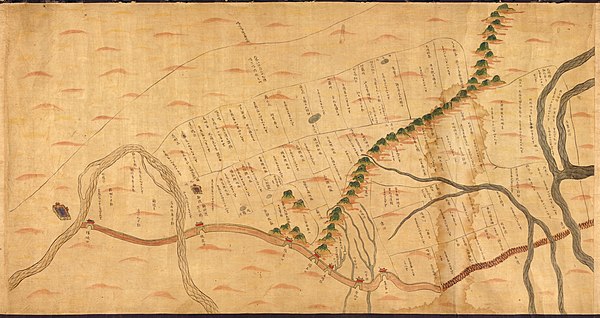


The Qing dynasty of China ruled over the Mongolian Plateau, including Inner Mongolia and Outer Mongolia. Both regions, however, were separately administered within the empire.
The estate of Jebtsundamba Khutugtu, the Great Shabi (from Mongolian shabi, disciple) in 1723, became independent from the four aimags in the sense that its subjects were exempt from most taxes and corvees. The shabi did not—except the three Darkhad otog in Khövsgöl—control territory. Rather, its subjects mostly lived among the general population. Similar shabis existed for other high lamas.[1]
The direct-controlled Mongols (Chinese: 內屬蒙古) were banners (khoshuu) controlled by provinces, generals and ambasa. The following regions were directly controlled by the Manchu:

Inner Mongolia's[2] original 24 aimags (ᠠᠶᠢᠮᠠᠭ) were replaced by 49 banners (khoshuus) that would later be organized into six leagues (chuulgans, assemblies). The eight Chakhar banners and the two Tümed banners around Guihua were directly administered by the Manchu.

The Khalkha aimags were preserved—with the notable exception of the establishment of Sain Noyan aimag in 1725. Each aimag had a chigulgan, usually named after the place (mountains or rivers) where it convened. The aimags were divided into banners - whose number increased from originally eight eventually to 86—and further into sums.[3]Asum consisted of 150 men fit for military service, a bag of 50.[4] A military governor was installed in Uliastai, and two civil governors (amban) in Khüree and in Kobdo.
Thirty khoshuu:
13 banners (in modern-day Xinjiang)